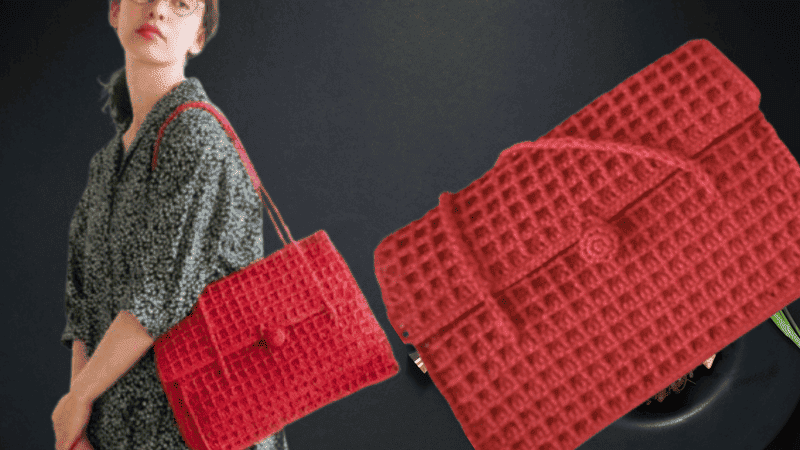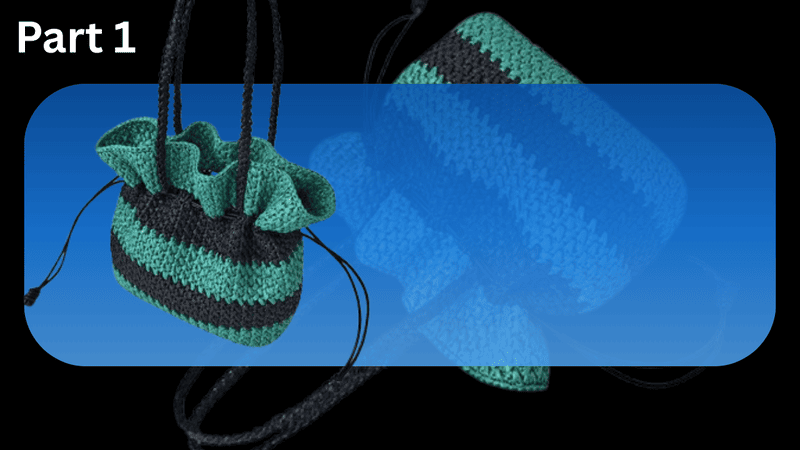Double Crochet Increase: The Complete Beginner’s Guide

Table of Contents for double crochet increase
Double crochet increase : practitioners of crochet usually pause for a moment of quiet triumph when the simplest stitches finally fall into place. That well-earned confidence often inspires a hunger for shape and form; the very next leap is the double-crochet increase. This single maneuver quietly governs the way fabrics billow in blankets, hug the body in garments, or puff out unexpectedly in tiny amigurumi creations.
In the pages that follow, every angle of the technique will be unpacked-what the stitch really is, how to work it, when it proves indispensable, Pick up a hook and let the shaping adventure begin.
What is a double crochet increase?
A double-crochet increase-sometimes written dc inc-involves inserting two or more double-crochet stitches into the same base stitch or space. The maneuver introduces new stitches into the row or round and causes the fabric to widen, often producing a gentle curve.
Picture the outcome this way: a row composed entirely of single double crochets remains flat and linear. whenever one stitch is replaced by two, however, the edge begins to fan outward.
Why should we learn double crochet increases?
Wielding the double-crochet increase with confidence lends precision to any crochet project. That single skill immediately opens several avenues:
- Patterns curve gracefully where stitches meet, eliminating the telltale bumps. Garments grow or shrink on command, matching any desired silhouette.
- Textured motifs-shelled edges, fan spreads-bloom naturally without extra effort. Even circular works-hats, doilies-reatch diameter painslessly, row by row.
Materials we’ll need
| Tool | Description |
|---|---|
| Yarn | Choose a strand in any weight, though worsted is a reliable starter for new stitches. |
| Crochet Hook | Settle on a gauge that matches the yarn label for balanced tension. |
| Scissors | Use scissors sharp enough to snip the tail cleanly—blunt blades leave frays. |
| Yarn Needle | A sturdy darning hook is perfect for tucking in leftover strands neatly. |
| Stitch Markers | So important when we have to count total stitches for a round or increase row. |
How to make a double crochet increase (Step-by-Step)?
Let us review the double-crochet-increase technique. Anyone comfortable with a standard double crochet will find the motion straightforward.
Yarn over
Begin by yarning over in the usual manner.
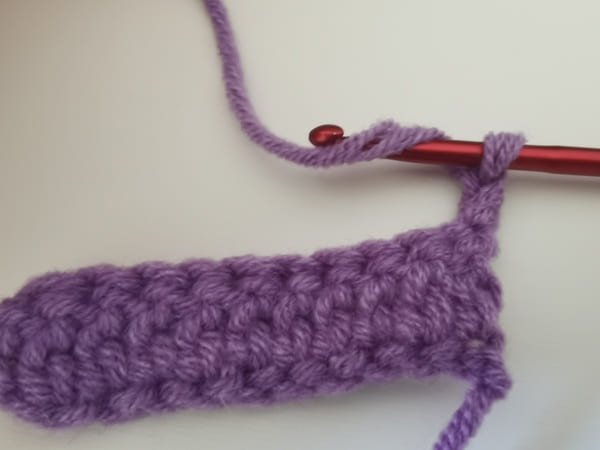
Insert the hook
Place the hook into the original stitch or designated space.
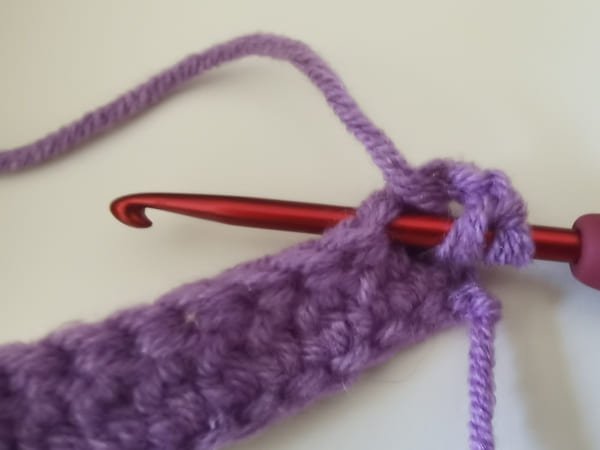
Yarn over again
Yarn over once more and draw up a loop, accumulating three loops on the shaft of the hook.
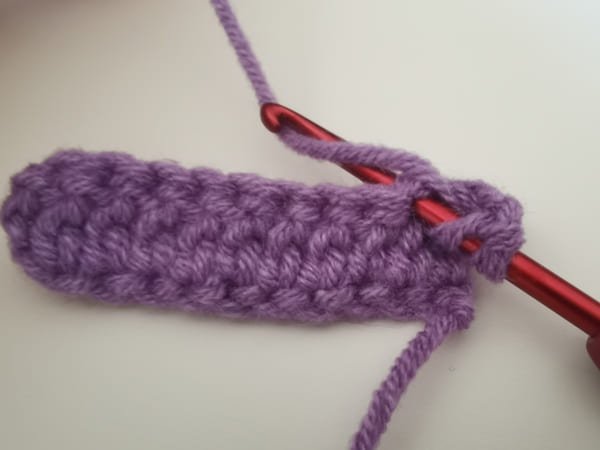
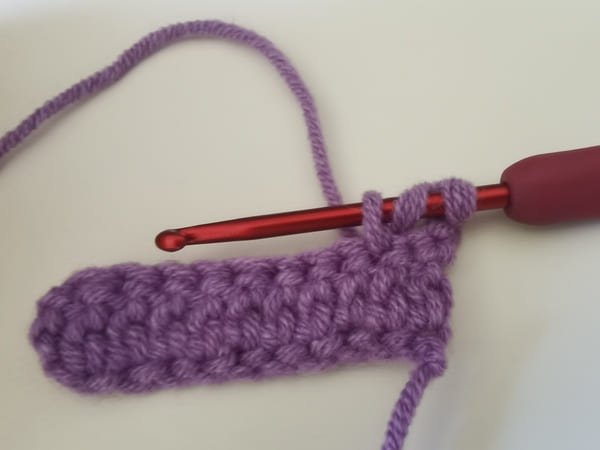
Complete the first dc
Yarn over, pull through two loops, yarn over again, and pull through the remaining two. The first double crochet is now finished.
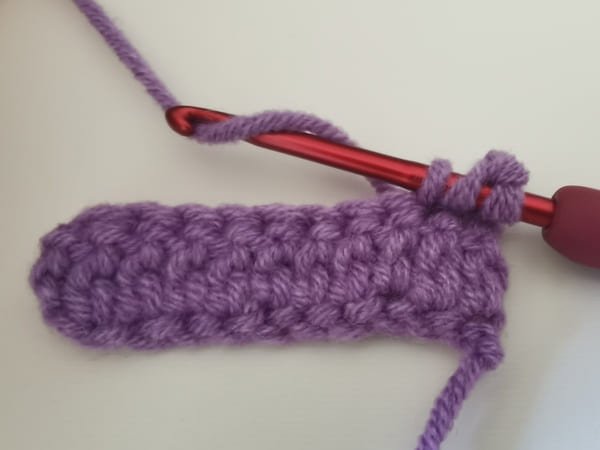
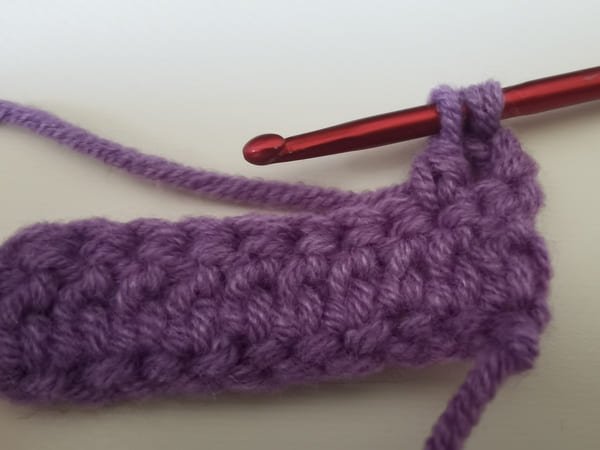
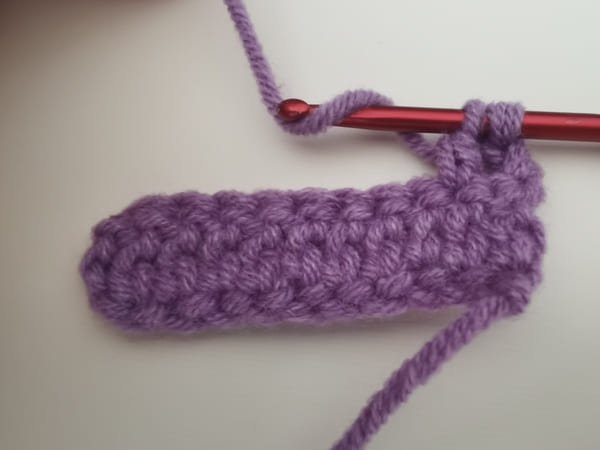

Repeat in the same stitch
Yarn over again, reinsert the hook into the identical stitch, and execute a second double crochet by tracing the earlier steps. A second set of two loops will anchor the new stitch.


Show as picture ,two arrowhead are double crochet increase.
That is it-we have just achieved the classic double-crochet increase.
Double crochet increase in the round
It is so same as the above crochet method for double crochet increase in the round.
Round 1: begins with 3 chain stitch , treated as the first double crochet. eleven additional double crochets are placed in the starting ring and the round is closed with a slip stitch. the tally stands at 12 double crochets.
For Round 2 :a fresh 3 chain stitch is created and a double crochet is stitched into the same base. Two double crochets fill every existing stitch before the round is joined( use slip stitch method). The total has now swollen to 24 double crochets.
Tips to make our double crochet increases look neat
Several practical refinements have emerged from years of trial and error:
Maintain even tension
When one strand pulls tighter than another, the extra stitch tends to bulge. A steady draw on the yarn keeps the fabric flush.
Employ a stitch marker
On circular work, the point after an increase can vanish if we look away for a moment. A simple ring flags the spot until the row is complete.
Choose yarn and hook intentionally
Soft, silky fibers sometimes slip free of a loose hook, while haloed yarn hides a lazy strand. Adjust diameter or swap for a grip-textured tool, and smooth out any rough patches.
Common mistakes and How we fix double crochet increase
Mistake 1: missing increase
A surprising number of knitters overlook that second double-crochet. A mid-row tally of stitches acts as an effective checkpoint.
Mistake 2: excessive increases
Pushing the needle too enthusiastically can introduce extra yawns of space. Following the written directions and marking each planned increase helps establish control.
Mistake 3: jagged edges
Ripples or puckers signal that widening and narrowing do not harmonize. Fine-tuning the locations of every increase restores balance.
Frequently Asked Questions (FAQs)
Q: Can we do a double crochet increase on both sides of a row?
A: I am certainly on board. increase methods are practically housekeeping in wardrobe design. To bend the fabric, just sprinkle a pair of double crochets along each margin of the pass.
Q: Can we increase more than two dc in the same stitch?
A: Certainly the two-stitch cap does not apply once imagination takes center stage. Three, four, or even five double crochets crammed into a single post appear regularly in ornamental compositions such as the classic shell, where five dc nestle together.
Fan motifs and their cousins-split clusters or puffs-use the same crowded principle to add depth to the fabric.
A simple heuristic holds: pack extra yarn loops into one space and the resulting bump delivers instant drama and dimension.
Q: What happens if we accidentally skip or overdo an increase?
A:Failure to add the planned increase could leave the work pinching inward or folding unexpectedly. A surplus of increases, on the other hand, can create an undesired ruffle or wave in the underlying fabric.
- Regularly counting stitches remains the simplest safeguard-ideally at the close of every row or round.
- Strategically placed stitch markers also help denote each intended increase location.
- Finally, a quick visual check of how the fabric drapes will reveal any emerging problems; early correction tends to be the easiest correction.
Reference sources
1.Learn the most comprehensive guide for single crochet(sc)
Author:Sarah Stearns
Publication date: on June 15, 2021, updated:December 14, 2024
Title: How to single crochet (sc)for beginners
Summary as blow:
- Step-by-Step Single Crochet for Beginners
- Single Crochet into a Foundation Chain
- Single Crochet into another Row
- Single Crochet in the Round
- Increases and Decreases
- Working Single Crochet in Different Loops

